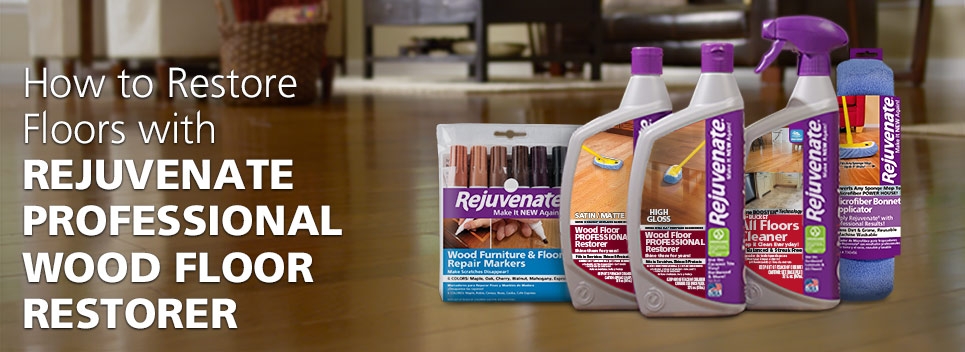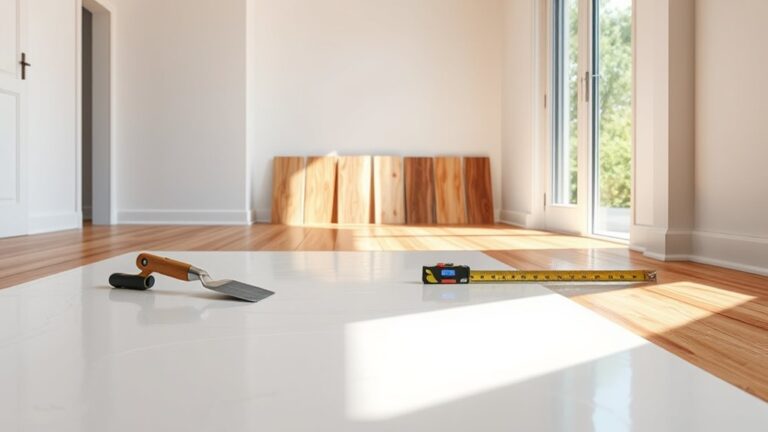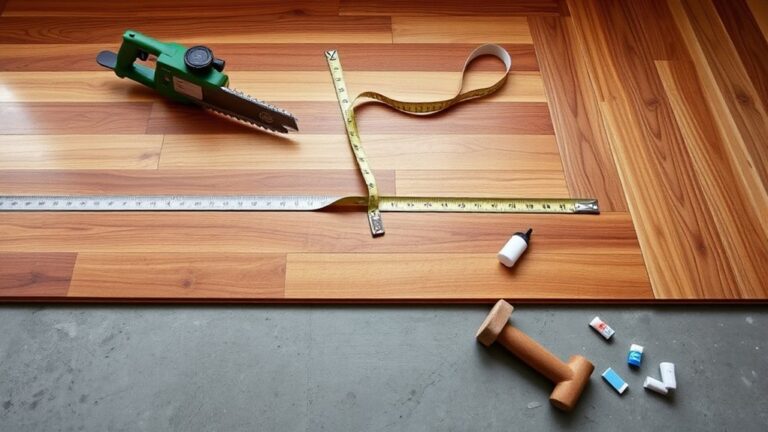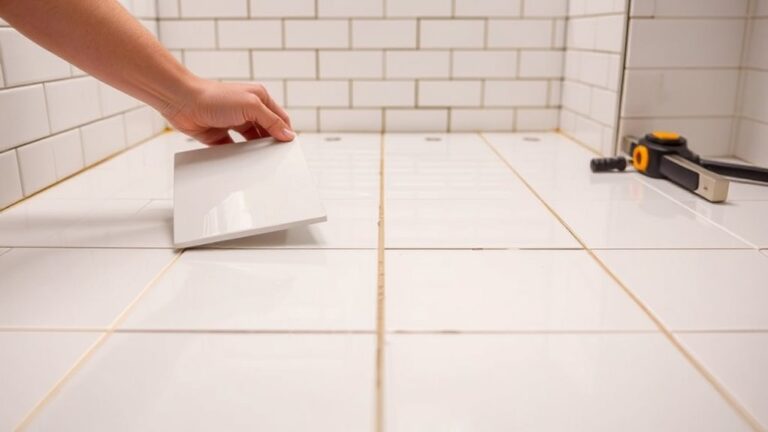To fix faded hardwood floors, you need to refinish them by sanding and applying a fresh coat of finish. Hardwood floors add both elegance and value to a home, but over time, they can become faded and lose their luster.
If you’re facing this issue, don’t worry! There is a solution. By following a straightforward refinishing process, you can restore your hardwood floors to their original beauty. This article will guide you through the steps necessary to fix faded hardwood floors and bring back their shine.
From sanding to applying a fresh coat of finish, we will provide you with all the essential information you need to successfully revive your worn-out hardwood floors. So, let’s roll up our sleeves and get started on the journey to restoring the natural beauty of your hardwood floors.

Credit: blackforestfloors.com
Understanding The Causes Of Faded Hardwood Floors
Hardwood floors can add a beautiful and timeless elegance to any home. However, over time, these floors can start to fade, losing their vibrant color and shine. Understanding the causes of faded hardwood floors is crucial in order to effectively fix and prevent further damage.
One of the main factors that contribute to faded hardwood floors is sunlight and exposure to UV rays. Over time, constant exposure to sunlight can cause the wood to lose its natural color and become lighter. UV rays can also break down the finish on the wood, leaving it more susceptible to damage.
In addition to sunlight, the natural aging process and regular wear and tear can also contribute to faded hardwood floors. As the wood gets older, it can naturally lose its luster and vibrancy. Additionally, constant foot traffic and the movement of furniture can cause the wood to wear down and become dull.
To fix and prevent faded hardwood floors, it is important to take proactive steps. One way is to install blinds or curtains to limit the amount of sunlight that enters the room. Applying a protective coating or finish to the wood can also help protect it from UV rays and aging. Regular cleaning and maintenance, such as using gentle cleaners and avoiding harsh chemicals, can also help preserve the floor’s natural beauty.
Assessing The Condition Of Faded Hardwood Floors
Assessing the condition of faded hardwood floors is the first step towards fixing them. Start by evaluating the extent of fading, which can vary from minor discoloration to complete loss of color. Look closely at the affected areas to determine the severity. Additionally, it is important to identify any underlying issues that may have caused the fading. Water damage can result in fading, so check for signs of leaks or spills. Stains from chemicals or pet urine can also contribute to discoloration. Once you have assessed the condition and identified potential causes, you can proceed with the appropriate solutions to restore the hardwood floors to their original beauty.
Preparing Faded Hardwood Floors For Restoration
Preparing faded hardwood floors for restoration involves clearing the area and removing furniture to create an accessible space for the work. This step is crucial as it ensures that there are no obstacles or obstructions that could interfere with the restoration process. Once the area is clear, it is essential to thoroughly clean the floor surface to remove any dirt, dust, or debris that has accumulated over time. This can be done by sweeping, vacuuming, or using a damp mop, depending on the condition of the floor. The goal is to create a clean and smooth surface for the restoration work.
Sanding And Refinishing Faded Hardwood Floors
Choosing the right grit sandpaper is crucial when it comes to removing old finish from faded hardwood floors. The right grit will ensure effective removal without damaging the wood. Before beginning the sanding process, it’s important to assess the level of fading and wear on your floors. If the finish is severely worn, you may need to start with a coarser grit, such as 40 or 60, to remove the old finish completely. For less damaged floors, a medium grit between 80 and 100 is often recommended.
To achieve smooth results, proper sanding techniques are essential. Always move the sandpaper in the direction of the grain, applying even pressure and avoiding excessive sanding in one area. Start with the coarsest grit and gradually work your way to a finer grit for a polished finish. Make sure to clean the floors thoroughly after each sanding step, removing any dust or debris.
Once the sanding is complete, you can proceed with refinishing the floors using appropriate stains and sealants, ensuring your faded hardwood floors regain their former beauty and luster.
Staining And Sealing Faded Hardwood Floors
Faded hardwood floors can be easily fixed by staining and sealing them. This process not only enhances the appearance of the floors but also protects them from further damage and increases their durability. When it comes to selecting the appropriate stain color, it is important to consider the desired look you want to achieve. Whether you prefer a darker shade to create a warm and cozy ambiance or a lighter tone to make the room appear more spacious, there are numerous options available. It is recommended to test different stain colors on a small inconspicuous area to ensure the desired outcome. Once the stain is applied and dried, sealing the floors is crucial to provide an extra layer of protection against moisture, spills, and wear and tear. Applying a sealant not only prolongs the lifespan of the floors but also adds a glossy finish, enhancing their overall aesthetic appeal.
Addressing Deep Stains And Discoloration
In addressing deep stains and discoloration on hardwood floors, a common technique is to use wood bleach to lighten dark spots. Wood bleach is a chemical solution that can effectively remove stains and discoloration without damaging the wood. It works by breaking down the pigments in the wood, allowing them to be lifted from the surface. It is important to follow the manufacturer’s instructions when using wood bleach, as it can be a powerful and potentially hazardous chemical. Another technique for removing stubborn stains is to use sandpaper or a floor buffer to gently sand away the stain. This method requires caution and meticulous attention to avoid damaging the surrounding areas. By employing these techniques, you can effectively address and fix faded hardwood floors and restore their natural beauty.
Repairing Small Damages On Faded Hardwood Floors
Faded hardwood floors can affect the overall appearance of a room. Fortunately, there are ways to fix this issue and restore the beauty of your hardwood floors. When it comes to repairing small damages on faded hardwood floors, filling in cracks and gouges with wood putty is a common solution. This involves carefully applying wood putty into the damaged areas, allowing it to dry, and sanding it down until it is smooth and flush with the rest of the floor. Another method is matching and replacing damaged wood planks. This may involve finding similar wood species and installing them to replace the damaged sections. It is important to ensure the new planks are the same size and finish as the existing ones to create a seamless look. With these techniques, you can restore your faded hardwood floors and bring back their original luster.
Restoring Shine And Luster To Faded Hardwood Floors
Faded hardwood floors can be restored to their former glory with the right techniques and products. One way to revive the shine and luster is by applying hardwood floor polish or wax. These products create a protective barrier that enhances the natural beauty of the wood and helps to prevent further damage. Buffing and polishing techniques can also be used to achieve a glossy finish. By using a floor buffer or a polishing machine, the worn-out surface can be rejuvenated. It’s important to follow the manufacturer’s instructions when applying polish or wax and when using a buffing machine to ensure the best results. Regular maintenance such as sweeping and mopping with a suitable cleaner will further extend the lifespan of your hardwood floors.
Maintaining Restored Hardwood Floors
Faded hardwood floors can make your space look dull and unappealing. However, there are ways to fix and maintain your restored hardwood floors to keep them looking their best for years to come. Regular cleaning and dusting should be a part of your routine to prevent dirt and debris from scratching the surface. Use a soft-bristle broom or a vacuum cleaner with a brush attachment to remove loose dirt and dust. For a deeper clean, damp mop the floors using a mild hardwood floor cleaner. Avoid using excessive water, as it can seep into the wood and cause damage.
To prevent future fading and damage, it is important to take preventive measures. Avoid excessive exposure to direct sunlight by using curtains or blinds. This will help prevent UV rays from fading the wood. Place rugs or mats in high traffic areas to protect the floors from scratches and wear. Use furniture pads under the legs of chairs and tables to prevent scratching. Additionally, avoid using harsh cleaning products or abrasive tools that can damage the finish.
| Tips for maintaining restored hardwood floors: |
| – Regularly clean and dust the floors using a soft-bristle broom or a vacuum cleaner with a brush attachment. |
| – Damp mop the floors using a mild hardwood floor cleaner for a deeper clean. |
| – Protect the floors from excessive sunlight by using curtains or blinds. |
| – Place rugs or mats in high traffic areas to prevent scratches and wear. |
| – Use furniture pads under the legs of chairs and tables to avoid scratching the floors. |
| – Avoid using harsh cleaning products or abrasive tools that can damage the finish. |
Professional Help For Faded Hardwood Floor Restoration
Faded hardwood floors can be a significant problem, but there are ways to fix them and restore their original beauty. While some DIY techniques are available, seeking professional help for hardwood floor restoration is often the best option. Experts have the knowledge and experience to tackle the job efficiently and effectively. But when should you consider hiring an expert?
If your hardwood floors are severely faded, discolored, or damaged, it is a good idea to consult a reputable hardwood floor restoration service. These professionals can assess the condition of your floors and provide expert advice on the best restoration options. They have access to specialized equipment and techniques to bring back the luster of your hardwood floors.
Finding a reputable hardwood floor restoration service is crucial to ensure excellent results. Researching online reviews, asking for recommendations from friends or family, and checking their previous work samples can help you make an informed decision. By hiring an expert, you can save time, effort, and potentially expensive mistakes that could occur during a DIY restoration project.
Frequently Asked Questions On How To Fix Faded Hardwood Floors
How Do You Fix Sun-faded Hardwood Floors?
To fix sun-faded hardwood floors, start by sanding away the faded layers. Then, apply a fresh coat of stain or finish to restore the color and protect the wood. Make sure to clean and dry the floors before applying any products.
Lastly, seal the floors to prevent future sun damage.
How Do You Fix Sun-faded Hardwood Floors Without Sanding?
To fix sun-faded hardwood floors without sanding, apply a wood stain or tinted finish that matches the original color. Clean the floors thoroughly, then apply the stain or finish using a brush or rag. Allow it to dry completely before applying a clear protective coat.
How Do You Restore Color To Wood Floors?
To restore color to wood floors, follow these steps: 1. Clean the surface with a wood floor cleaner. 2. Sand the floor lightly to remove any existing finish. 3. Apply a wood stain of your choice using a paintbrush or a rag.
4. Allow the stain to dry completely. 5. Finish with a clear sealant or topcoat for added protection and shine.
How Do You Treat Faded Wood Floors?
To treat faded wood floors, follow these steps: 1. Sand the floor lightly to remove the top layer. 2. Apply wood stain or a tinted polyurethane finish to restore color. 3. Allow the finish to dry completely before applying a protective coat.
4. Use a floor wax or polish to enhance shine and protect the wood. 5. Regularly clean and maintain the floors to prevent fading in the future.
Conclusion
Revive your faded hardwood floors with these simple, effective techniques. By following the steps outlined in this blog post, you can restore the beauty and luster of your flooring without the need for expensive professional services. From sanding and refinishing to the application of a high-quality wood stain, there are options available for every homeowner.
Give your floors the attention they deserve and enjoy the renewed ambiance they bring to your home. Start the restoration process today and rediscover the charm of your hardwood floors.




